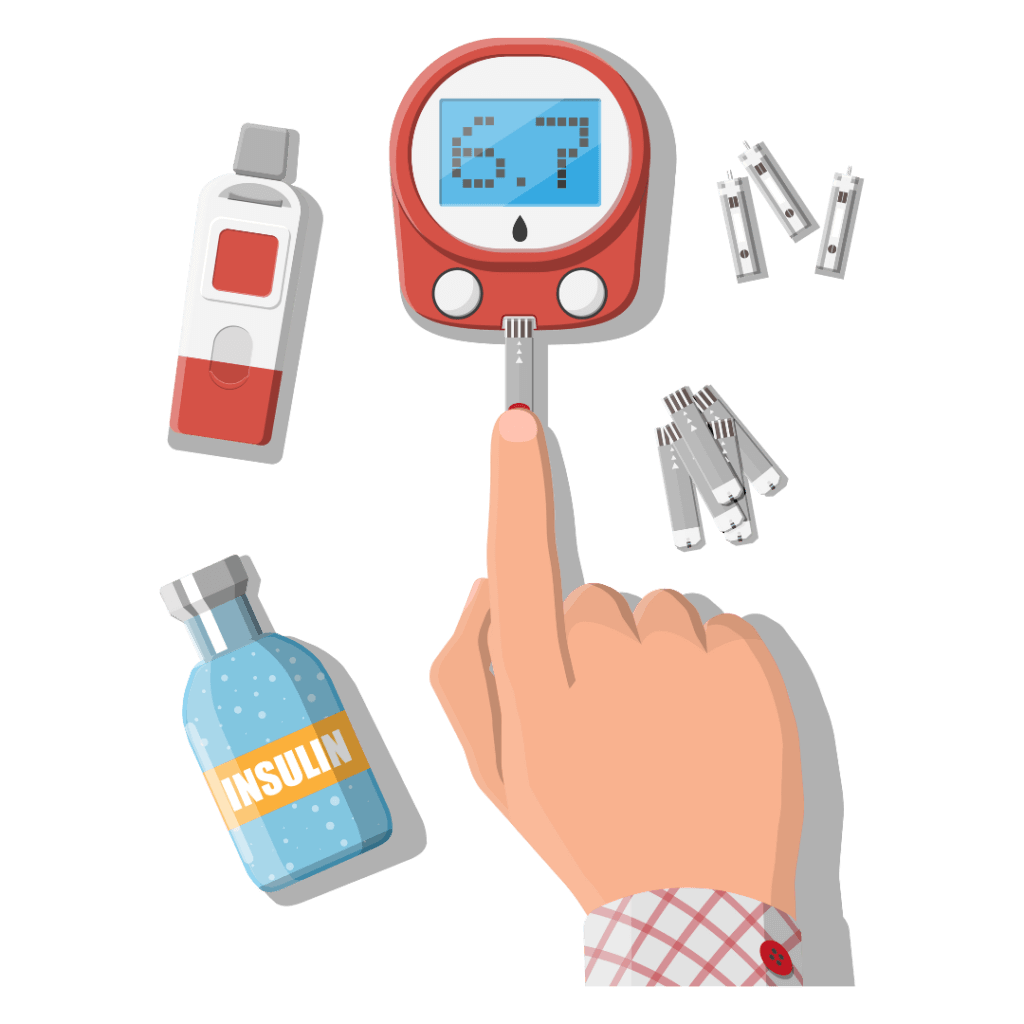Managing Blood Sugar Over the Holidays
While the holidays are a joyous occasion for many reasons, they can also be stressful for many people and families, especially those trying to control blood sugar. However, you don’t have to skip over your favorite desserts altogether. Instead, practice some of these tips below to help better manage your blood sugar over the holiday season.
As always, remember that the holidays are just a short blip in time compared to the entire year, so your habits day in and day out are what will make the most difference in your health.
What is Blood Sugar?
Your blood sugar is a measurement of the amount of sugar (glucose) moving through your body in your blood at a given time. It is important to have a steady, continuous supply of glucose in our bodies to enable us to live and perform daily functions. However, having too much or too little glucose in the blood can be a problem and cause unpleasant, sometimes dangerous, symptoms.
The normal range for fasting blood glucose is 70-100 mg/dL. If your fasting blood sugar is between 100-125 mg/dL, it is considered prediabetes. Diabetes is usually diagnosed if fasting blood sugar is above 126 mg/dL.


How is Blood Sugar Controlled?
Our body has internal hormone mechanisms that help keep blood sugar within normal limits. However, there are times and situations where these limits are overruled or stop working effectively.
Sugar enters the bloodstream after being digested from food. What food you eat (and how much) can impact your blood glucose level. From there, the pancreas releases hormones to help keep blood glucose in a normal range.
When blood glucose gets too low, the pancreas releases glucagon. This could happen as a result of fasting or health conditions. Glucagon helps the body release glycogen (glucose that is stored in the liver and tissues), which the body can convert to glucose and use for energy.
In contrast, when blood glucose gets too high, or higher than the body would like, the pancreas releases insulin, which helps lower blood glucose by bringing it into your cells. Without adequate or effective insulin release, blood glucose could accumulate in the blood, which can be dangerous.
How to Control Blood Sugar Through Diet
While diet is always important, people with diabetes and other conditions may be advised to take insulin to help better control blood sugar. This is something to discuss with your Registered Dietitian and/or doctor/medical care provider.
People interested in controlling blood sugar should become aware of something called the glycemic index. The glycemic index is a scale that ranks how quickly a carbohydrate will impact blood sugar. The glycemic load ranks how quickly a meal will impact blood sugar, and can be impacted by other parts of the meal, such as protein and fiber.
- Understand Food Labels – You’ll want to keep an eye on what the serving size is for a portion of food, as well as total carbohydrates, grams of sugar, and grams of fiber. Here’s a great rundown on reading a food label from the American Diabetes Association.
- Choose Low GI foods – Those looking to moderate blood sugar will want to choose options ranked lower on the glycemic index and glycemic load. Low GI foods generally have a score of 55 or less, while moderate GI foods fall between 56 and 69. High GI foods have a score of 70 or above.
- Pair your meals with protein – Protein helps blunt the rise in blood sugar, which is why you always want to pair your carbohydrate snacks and meals with protein. Lean sources of protein include poultry, eggs, lean beef, low-fat dairy, beans and legumes, and soy products.
- Add Fiber – Not only is fiber great for your gut health and digestion, but it also works to slow the rise in blood sugar, like protein. Choosing fiber-rich fruits and vegetables to brighten your plate is nourishing and flavorful. Fiber also lowers the glycemic load of a meal. A medium sweetpotato (with the skin) contains 3-4 grams of fiber.
- Increase intake of antioxidants – Antioxidants, components in food that can help neutralize harmful free radicals, are not only full of phytonutrients, but they can also help minimize inflammation in the body. Sweetpotatoes are a wonderful, natural source of a variety of antioxidants.
- Understand proper cooking techniques – Did you know that cooking foods, like sweetpotatoes, using different methods can impact the glycemic index? It’s true! Boiling sweetpotatoes is the most blood-sugar-friendly way to eat them, as it has the lowest glycemic index. Opt for boiling over roasting to lower the glycemic index.
- Don’t skip meals – Skipping meals can send your blood sugar on a roller coaster, and make things unpredictable for the body. Eating regular, consistent, balanced meals (with complex carbohydrates, protein, and fiber) can help regular blood sugar.
Other ways to Control Blood Sugar
Make sure to stay hydrated and exercise regularly, as both can also impact your overall health and your blood sugar. If you’re a smoker, try to give it up as that not only impacts your lung health but diabetes risk as well. Furthermore, getting adequate sleep and utilizing stress management techniques also play into your overall health and inflammation.
Resources:
- Hantzidiamantis PJ, Lappin SL. Physiology, Glucose. 2022 Sep 19. In: StatPearls [Internet]. Treasure Island (FL): StatPearls Publishing; 2023 Jan–. PMID: 31424785.https://www.ncbi.nlm.nih.gov/books/NBK545201/
- Zeigerer A, Sekar R, Kleinert M, Nason S, Habegger KM, Müller TD. Glucagon’s Metabolic Action in Health and Disease. Compr Physiol. 2021 Apr 1;11(2):1759-1783. doi: 10.1002/cphy.c200013. PMID: 33792899; PMCID: PMC8513137. https://pubmed.ncbi.nlm.nih.gov/33792899/